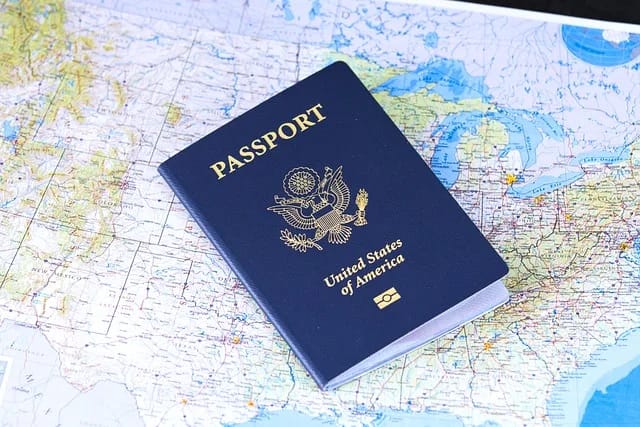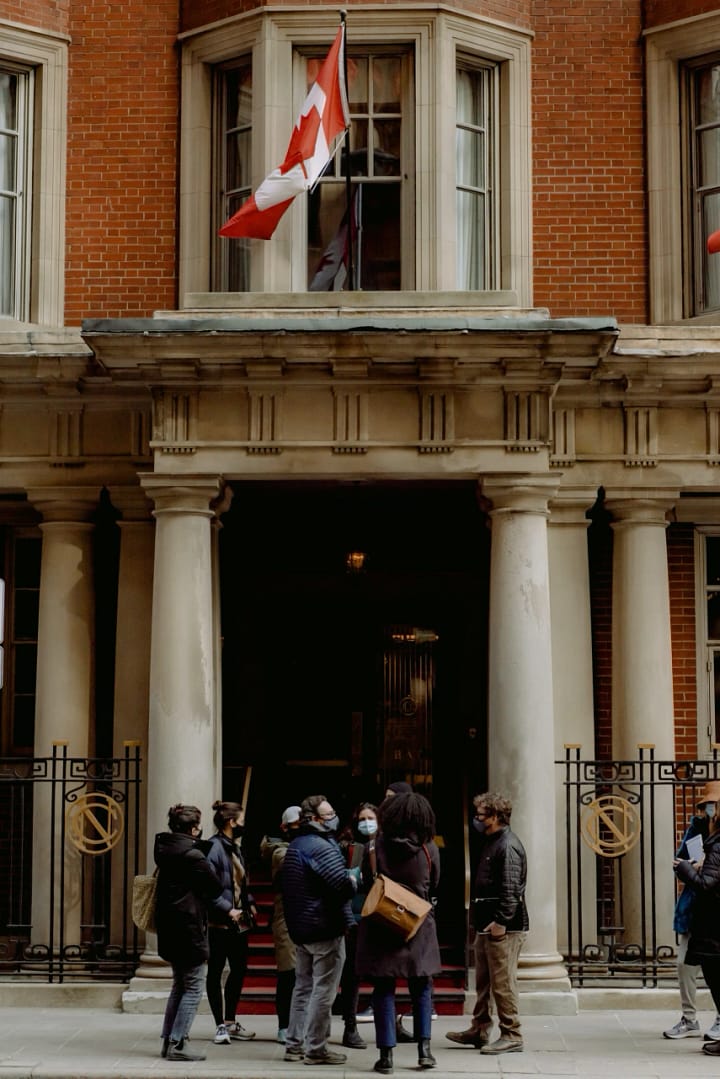#What do you mean by Passport and Visa?
#What do you mean by Passport and Visa?
Passport:
A passport is an essential travel document issued by a government to its citizens that certifies their identity and nationality. It serves as a universal form of identification when traveling internationally. A passport typically contains personal information such as the holder’s name, date of birth, photograph, and signature. It also includes details about the issuing country, passport number, and expiration date.
Obtaining a passport involves submitting an application along with the required supporting documents, which may include proof of citizenship, identity, and photographs. The application is usually processed by the passport office or an authorized agency. Once issued, a passport remains valid for a specific period, typically ranging from five to ten years, depending on the country. It is crucial to check the expiration date well in advance of any planned travel to ensure the passport is still valid.
Visa:
A visa is an official endorsement or document issued by a country’s immigration authorities that allows foreign nationals to enter, stay, or transit through that particular country for a specified purpose and duration. Visas are typically affixed to a passport or issued as an electronic authorization linked to the traveler’s passport.
The visa application process varies depending on the destination country and the purpose of travel. It usually requires completing an application form, providing supporting documents such as a valid passport, photographs, travel itinerary, proof of accommodation, and evidence of sufficient funds to cover the trip. Additionally, some countries may require applicants to undergo an interview or provide biometric data, such as fingerprints.
Visas come in different types, including tourist visas, business visas, student visas, work visas, and transit visas. Each visa type has specific conditions and restrictions regarding the purpose, duration, and activities permitted during the stay. It is important to carefully read and understand the visa requirements and comply with any conditions set by the immigration authorities to avoid any legal issues or complications during travel.
Both passports and visas play crucial roles in international travel, ensuring that travelers can establish their identity, citizenship, and legal permission to enter a foreign country. It is essential to familiarize oneself with the requirements and procedures related to passports and visas well in advance of any planned travel to ensure a smooth and hassle-free journey.
#What is the difference between Passport and Visa?
#What is the difference between Passport and Visa?
The main difference between a passport and a visa is their purpose and function. Here are the key distinctions:
1. Purpose: A passport primarily serves as a form of identification and proof of citizenship. It is issued by a government to its citizens and enables them to travel internationally. On the other hand, a visa is an official document or endorsement issued by a foreign country’s immigration authorities that grants permission for a foreign national to enter, stay, or transit through that country for a specific purpose and duration.
2. Issuer: Passports are issued by the government of the traveler’s home country. They certify the individual’s identity and nationality, providing a standardized form of identification accepted worldwide. Visas, on the other hand, are issued by the immigration authorities of the country being visited. They grant specific permission to enter and stay in that country for the designated purpose.

3. Information: Passports typically contain personal information about the holder, such as their name, date of birth, photograph, and signature. They also include details about the issuing country, passport number, and expiration date. In contrast, visas contain information related to the foreign country being visited, such as the purpose of travel, duration of stay, and any specific conditions or restrictions.
4. Application Process: Obtaining a passport usually involves submitting an application along with supporting documents to the passport office or an authorized agency. The process verifies the applicant’s citizenship and identity. Visa application processes vary depending on the destination country and the purpose of travel. They typically involve completing an application form, providing supporting documents, and, in some cases, attending an interview or providing biometric data.
5. Validity and Usage: Passports are generally valid for a specific period, typically ranging from five to ten years, depending on the country. They can be used for multiple trips during that period, as long as they remain valid. Visas, on the other hand, have varying validity periods depending on the type of visa and the country. They are usually specific to a single trip or a limited number of entries and often have a set duration of stay.
In summary, a passport is a document issued by a government that serves as a form of identification and citizenship proof, while a visa is a document issued by a foreign country’s immigration authorities that grants permission for entry and stay in that country. Passports are obtained from one’s home country, whereas visas are obtained from the country being visited.
#Explain the steps for obtaining passport.
#Explain the steps for obtaining passport.
The steps to obtain a passport can vary slightly depending on the country, but here is a general overview of the process:
1. Gather Required Documents: Start by collecting all the necessary documents for your passport application. These typically include proof of citizenship (such as a birth certificate or previous passport), proof of identity (such as a driver’s license or national ID card), passport-sized photographs, and any other supporting documents required by your country’s passport issuing authority.
2. Complete Application Form: Fill out the passport application form provided by the passport office or available online. Provide accurate and complete information regarding your personal details, contact information, and any additional required information.
3. Pay the Application Fee: Passport applications usually involve a processing fee. Check the fee amount and payment methods accepted by the passport office or agency. Pay the fee as required, keeping the receipt for future reference.
4. Submit Application: Submit your completed application form along with the required documents to the designated passport office, post office, or other authorized agency. Some countries also offer online submission options. Ensure that all documents are properly organized and any photographs meet the specified requirements.
5. Schedule an Appointment: Depending on the country and the specific application process, you may need to schedule an appointment for an in-person submission. Follow the instructions provided and arrive on time with all required documents and the application fee payment receipt.
6. Attend an Interview (if applicable): Some countries may require an interview as part of the passport application process. If an interview is necessary, prepare accordingly by reviewing the requirements and gathering any additional documents or information that may be needed.
7. Track Application Progress: After submitting your application, you can track its progress online or by contacting the passport office. This allows you to stay informed about the status of your application and any additional steps that may be required.
8. Receive Passport: Once your application is approved and processed, you will be notified regarding the collection of your passport. This is usually done in person at the passport office or through a designated delivery service. Follow the instructions provided to receive your passport.
It’s important to note that the specific requirements and procedures for obtaining a passport can vary between countries. Therefore, it’s recommended to consult the official website of your country’s passport issuing authority for detailed and up-to-date information.
#Explain the steps in obtaining Visa as an Indian citizen.
#Explain the steps in obtaining Visa as an Indian citizen.
As an Indian citizen, here are the general steps involved in obtaining a visa for international travel:
1. Determine Visa Requirements: Research and identify the visa requirements for the country you plan to visit. Each country has its own visa policies, so check the official website of the embassy or consulate of the destination country to understand the specific visa type, application process, and required documents.
2. Choose the Correct Visa Type: Determine the appropriate visa type based on the purpose of your travel, such as tourist visa, business visa, student visa, work visa, or transit visa. Each visa type has different requirements and restrictions, so ensure you select the correct one that aligns with your travel purpose.
3. Complete the Visa Application Form: Obtain the visa application form, either online or in person, from the embassy or consulate of the destination country. Fill out the form accurately and completely, providing all the necessary information, including personal details, travel itinerary, and purpose of travel.
4. Gather Supporting Documents: Prepare the supporting documents required for the visa application. These typically include a valid passport with a specified validity period, recent passport-sized photographs, proof of travel arrangements (such as flight itineraries or hotel reservations), financial documents demonstrating your ability to cover the trip expenses, travel insurance, and any additional documents specific to your visa type (e.g., invitation letters, employment letters, or educational transcripts).
5. Pay Visa Fees: Check the visa fees and payment methods specified by the embassy or consulate. Pay the required visa fees using the accepted payment method, which may include cash, debit/credit card, or bank transfer. Receipt of the payment keep it safely for future reference.
6. Schedule an Appointment: Depending on the embassy or consulate, you may need to schedule an appointment for submitting your visa application and supporting documents. Follow the instructions provided on the embassy’s website or contact the visa application center to schedule an appointment at a convenient date and time.
7. Attend the Visa Interview (if applicable): Certain countries may require a visa interview as part of the application process. If an interview is necessary, prepare by familiarizing yourself with the visa requirements, gathering relevant documents, and practicing potential interview questions. Arrive on time and present yourself professionally during the interview.
8. Submit Application and Biometric Data: Attend the scheduled appointment and submit your completed visa application form, supporting documents, and passport. In some cases, you may be required to provide biometric data, such as fingerprints or a photograph, at the visa application center.
9. Track Application Status: After submitting your visa application, you can typically track its progress through the embassy or consulate’s online visa tracking system. This will allow you to monitor the status of your application and be informed about any additional requirements or decisions.
10. Collect Visa and Passport: Once your visa application is processed and approved, you will receive notification to collect your passport with the visa stamped in it. This can be done by visiting the embassy or consulate or using a designated passport collection service.
It is important to note that visa requirements and procedures can vary between countries and may be subject to change. Therefore, it is advisable to consult the official website of the embassy or consulate of the destination country for the most accurate and up-to-date information regarding visa requirements and application procedures for Indian citizens.
#Name the websites useful for obtaining Visa and Passport in India.
#Name the websites useful for obtaining Visa and Passport in India.
The official website for obtaining visas and passports in India is the Ministry of External Affairs,
Government of India’s website: https://www.passportindia.gov.in/.
This website provides comprehensive information and services related to passport issuance, including passport application forms, fee details, appointment scheduling, and tracking application status. For visa-related information, Indian citizens can refer to the website of the specific embassy or consulate of the country they intend to visit, as visa application processes and requirements vary for each destination.
#What is a Student Visa?
#What is a Student Visa?
A student visa is a type of visa that allows individuals to travel to a foreign country for the purpose of studying at an educational institution. It is specifically designed for students who wish to pursue academic programs, such as degree programs, language courses, or research programs, in a foreign country. A student visa grants the holder permission to reside in the host country temporarily to complete their studies.

Here are some key points to understand about student visas:
1. Purpose: The primary purpose of a student visa is to enable individuals to pursue educational opportunities abroad. It allows them to enroll in educational institutions, attend classes, and participate in academic activities in the host country.
2. Duration: Student visas are typically granted for the duration of the academic program or a specified period. The duration can vary depending on the country and the specific program of study. Students are expected to leave the country once their studies are completed or when their visa expires, unless they apply for further stay or work opportunities.
3. Application Process: The application process for a student visa involves submitting the necessary documents and fulfilling the requirements set by the immigration authorities of the host country. This usually includes providing proof of acceptance into an educational institution, financial documentation to demonstrate the ability to cover tuition fees and living expenses, medical insurance coverage, and sometimes evidence of language proficiency or academic qualifications.
4. Restrictions and Conditions: Student visas may have certain restrictions and conditions attached to them. For example, students may be required to maintain full-time enrollment in their academic program, inform the authorities of any change in their educational institution or address, and comply with the immigration regulations of the host country. Some student visas may also allow limited work opportunities or provide options for part-time employment during the study period.
5. Dependent Visas: In some cases, student visa holders may be able to bring their dependents, such as spouse or children, with them through dependent visas. These visas allow family members to accompany the student and reside in the host country. The specific rules and eligibility criteria for dependent visas vary between countries.
It is important to note that the requirements, application procedures, and conditions for student visas can vary significantly between countries. It is advisable to refer to the official website of the embassy or consulate of the host country for detailed and up-to-date information regarding student visa requirements and procedures.
#What are the conditions to get visa for a Job in a foreign country?
#What are the conditions to get visa for a Job in a foreign country?
The conditions to obtain a visa for a job in a foreign country can vary depending on the country’s immigration policies and the specific job or work category. However, here are some general conditions that are often required:
1. Valid Job Offer: Typically, you need to have a valid job offer from an employer in the foreign country. The job offer should clearly state the position, salary, duration of employment, and other relevant details.
2. Labor Market Test: Some countries may require the employer to demonstrate that they have made efforts to recruit local workers before offering the job to a foreign candidate. This can involve advertising the position and providing evidence of unsuccessful attempts to fill the vacancy with local applicants.
3. Work Permit Approval: In many cases, the employer must obtain a work permit or sponsorship approval from the relevant immigration authorities in the foreign country. This is often a prerequisite for the employee to apply for a work visa.
4. Qualifications and Skills: Depending on the job and the country, certain qualifications, skills, or professional experience may be required. This can include specific academic degrees, professional certifications, or relevant work experience in the field.
5. Language Proficiency: In some countries, a certain level of language proficiency may be required to work in specific industries or occupations. This can involve providing evidence of language proficiency through standardized language tests or other accepted means.
6. Health and Character Checks: Many countries require job applicants to undergo medical examinations to ensure they do not pose a health risk. Additionally, character checks, such as police clearance certificates, may be required to demonstrate good conduct and integrity.
7. Financial Requirements: Some countries may have financial requirements to ensure that foreign workers have the means to support themselves during their stay. This can involve demonstrating sufficient funds to cover living expenses or providing evidence of financial support from the employer.
8. Documentation and Forms: The applicant is typically required to complete the necessary visa application forms and provide supporting documentation, such as a valid passport, passport-sized photographs, and any additional documents specified by the immigration authorities.
It is important to note that the specific conditions and requirements for work visas can vary significantly between countries. It is recommended to consult the official website of the embassy or consulate of the foreign country you are interested in working in for detailed and up-to-date information regarding work visa requirements and procedures.
#Which are the Exams that one has to PASS to get a Visa in a foreign country?
#Which are the Exams that one has to PASS to get a Visa in a foreign country?
The exams required to obtain a visa for a foreign country depend on several factors, including the country you plan to visit, the purpose of your travel, and the specific visa category you are applying for. Here are some common exams that may be required in certain situations:
1. Language Proficiency Exams: Many countries require applicants to demonstrate their proficiency in the language spoken in the host country. Common language proficiency exams include the International English Language Testing System (IELTS), Test of English as a Foreign Language (TOEFL), or the Cambridge English exams. These exams assess your reading, writing, listening, and speaking skills in English or the language of the host country.
2. Academic Qualification Exams: If you are applying for a student visa, some countries may require you to provide evidence of your academic qualifications. This can include transcripts, diplomas, or certificates from your previous educational institutions. However, specific exams like the SAT, ACT, or subject-specific exams may be required for admission into certain educational programs or institutions.
3. Professional Certification Exams: Certain professions or occupations may require specific professional certifications or qualifications. To work in fields such as medicine, engineering, teaching, or law in a foreign country, you may need to pass exams specific to your profession. These exams can vary depending on the country and profession, such as medical licensing exams, engineering board exams, or teaching qualification exams.
4. Skills Assessment Exams: Some countries have skills assessment programs to evaluate the qualifications and experience of individuals applying for work visas. These assessments may involve practical tests, interviews, or examinations to determine your suitability for employment in specific occupations or industries.
5. Medical Exams: For certain visa categories, such as long-term work visas or immigrant visas, medical examinations may be required to ensure you do not have any communicable diseases or medical conditions that could pose a health risk to the host country’s population.
It is important to note that not all visas require specific exams, and the requirements can vary widely depending on the country and visa category. It is recommended to check the official website of the embassy or consulate of the host country to determine the specific exams, if any, required for the visa you are applying for. They will provide the most accurate and up-to-date information regarding the visa application process and any exams or qualifications needed.
#Explain IELS AND TOEFL exams.

#Explain IELS AND TOEFL exams.
IELTS (International English Language Testing System) and TOEFL (Test of English as a Foreign Language) are widely recognized and accepted exams that assess the English language proficiency of non-native English speakers. They are often used for academic, professional, or immigration purposes, especially for those seeking to study or work in English-speaking countries.
1. IELTS:
– Format: IELTS is available in two formats: IELTS Academic and IELTS General Training. The Academic module is primarily for individuals applying to study at universities or institutions, while the General Training module is typically used for immigration or work purposes.
– Sections: IELTS consists of four sections: Listening, Reading, Writing, and Speaking.
– Duration: The total test duration is approximately 2 hours and 45 minutes.
– Scoring: IELTS is scored on a nine-band scale, with each band representing a level of English proficiency, ranging from non-user (band 1) to expert (band 9).
– Test Availability: IELTS is administered by British Council, IDP Education, and Cambridge Assessment English, and tests are conducted in various locations worldwide.
2. TOEFL:
– Format: TOEFL is an internet-based test (TOEFL iBT) that assesses the English language skills necessary for academic purposes.
– Sections: Reading, Listening, Speaking, and Writing Test falls under TOEFL iBT assessments
– Duration: The total test duration is approximately 3 hours and 30 minutes.
– Scoring: TOEFL iBT is scored on a scale of 0 to 120, with each section receiving a score from 0 to 30.
– Test Availability: TOEFL iBT is administered by the Educational Testing Service (ETS) and is conducted at authorized test centers worldwide. It is also possible to take the TOEFL paper-based test (TOEFL PBT) in areas where the internet-based test is not available.
Both IELTS and TOEFL are designed to assess your reading, writing, listening, and speaking skills in English. The scores from these exams are widely accepted by universities, employers, and immigration authorities to determine English language proficiency for study, work, or immigration purposes. It’s important to note that different institutions or organizations may have specific score requirements, so it is advisable to check the requirements of the particular institution or country you are applying to.
It is recommended to visit the
official websites of
IELTS (https://www.ielts.org/)
TOEFL (https://www.ets.org/toefl)
for detailed information on exam formats, test dates, registration procedures, and additional resources for exam preparation.
# What do you mean by an Embassy?
#What do you mean by an Embassy?
An embassy is the diplomatic representation of one country in another country. It serves as the official headquarters and office of the ambassador, who is the highest-ranking diplomat representing the sending country in the host country. Embassies play a crucial role in international relations, facilitating communication, promoting diplomatic ties, and protecting the interests of their home country and its citizens abroad.
Here are some key features and functions of an embassy:
1. Diplomatic Mission: An embassy represents the sending country’s government and acts as a diplomatic mission to establish and maintain diplomatic relations with the host country.
2. Ambassador: An embassy is led by an ambassador who is appointed by the sending country’s government. The ambassador serves as the official representative and spokesperson of the sending country and is responsible for managing diplomatic affairs, promoting bilateral relations, and protecting the interests of their country and its citizens.
3. Consular Services: Embassies provide consular services to their citizens and residents of the sending country who are traveling, living, or working in the host country. These services include issuing passports, visas, and other travel documents, providing assistance during emergencies, offering support for citizens in distress, and facilitating legal and administrative matters.
4. Cultural Promotion: Embassies often organize cultural events, exhibitions, and exchanges to promote their country’s culture, art, traditions, and heritage in the host country. These activities help foster understanding, friendship, and cooperation between the two nations.
5. Trade and Economic Promotion: Embassies play a role in promoting trade, investment, and economic cooperation between the sending and host countries. They facilitate business connections, provide information on trade opportunities, and support trade missions and negotiations.

6. Political and Diplomatic Representation: Embassies engage in political and diplomatic activities to represent the interests of their country. This involves participating in diplomatic negotiations, attending official functions and meetings, and advancing the sending country’s foreign policy objectives.
Embassies are typically located in the capital city of the host country, and their premises are considered sovereign territory of the sending country. They enjoy certain diplomatic privileges and immunities granted by international law to ensure the smooth functioning of diplomatic relations.
It’s important to note that consulates, which are additional diplomatic missions of a country located in different cities of the host country, also provide specific consular services but have a narrower focus compared to embassies.
# How to get a permanent citizenship of a foreign country?
# How to get a permanent citizenship of a foreign country?
Obtaining permanent citizenship in a foreign country, also known as naturalization or acquiring nationality, is a complex process that varies depending on the country’s laws and policies. While the specific requirements and procedures differ, here are some common steps involved in seeking permanent citizenship:
1. Eligibility: Review the eligibility criteria for obtaining citizenship in the target country. This may include factors such as residency requirements, age, language proficiency, good character, and financial stability.
2. Residency: In most cases, you will need to reside legally in the country for a specified period as a permanent resident or through other authorized visa categories. The duration of residency required can vary significantly, ranging from a few years to more than a decade.
3. Legal Status: Ensure that your residency and stay in the country are compliant with immigration laws. Maintain a valid visa or residency permit, abide by the terms and conditions of your stay, and avoid any legal issues or violations that could jeopardize your application.
4. Integration and Language Proficiency: Many countries require applicants to demonstrate their integration into the local society, including knowledge of the country’s language, culture, and history. This may involve passing language tests, attending integration courses, or providing evidence of participation in community activities.
5. Citizenship Application: Prepare and submit a formal application for citizenship according to the requirements and guidelines provided by the country’s immigration authorities. This typically involves completing an application form, providing supporting documents such as birth certificates, passports, and residence records, and paying the required fees.
6. Background Checks and Interviews: Expect to undergo thorough background checks, including criminal record checks, to ensure you meet the character requirements for citizenship. Some countries may also conduct interviews or assessments to evaluate your commitment to the country and knowledge of its laws and values.
7. Citizenship Test: Certain countries may require applicants to pass a citizenship test that assesses their understanding of the country’s history, government, and civic responsibilities. This test may be written or oral and is typically administered in the official language of the country.
8. Citizenship Ceremony: If your application is approved, you may be invited to attend a citizenship ceremony where you take an oath of allegiance or make a formal pledge to uphold the rights, duties, and values of the country.
It’s important to note that the process and requirements for obtaining permanent citizenship vary significantly between countries. It is advisable to consult the official website of the immigration or citizenship authorities in the target country for detailed and up-to-date information on their specific requirements, procedures, and timelines. Seeking professional advice from immigration lawyers or consultants who specialize in citizenship matters can also be helpful in navigating the process successfully.
# What are the rules to get a VISA for America, and its types?
# What are the rules to get a VISA for America, and its types?
The visa rules of the United States of America can be complex and can vary depending on the purpose of your visit. Here are some key points to understand about visa rules in the United States:
1. Nonimmigrant Visas: The United States offers various types of nonimmigrant visas for temporary visits, including tourism, business, education, work, and medical treatment. Each visa category has its specific requirements and conditions. Some commonly used nonimmigrant visas include B-1 (Business Visitor), B-2 (Tourist Visitor), F-1 (Student), H-1B (Temporary Worker in Specialty Occupation), and J-1 (Exchange Visitor).
2. Visa Waiver Program (VWP): The Visa Waiver Program allows citizens of certain countries to travel to the United States for tourism or business purposes without obtaining a visa, provided they meet specific requirements. Travelers entering under the VWP must apply for an Electronic System for Travel Authorization (ESTA) prior to their trip.
3. Immigrant Visas: Immigrant visas are intended for individuals planning to reside permanently in the United States. The most common immigrant visa categories include family-sponsored visas, employment-based visas, and diversity visas (DV) through the Diversity Visa Lottery Program.
4. Visa Application Process: The visa application process generally involves completing an online application form (DS-160), paying the application fee, scheduling an appointment at a U.S. embassy or consulate, and attending an interview. The interview is an essential part of the process, during which the consular officer assesses the applicant’s eligibility and purpose of travel.
5. Documentation and Supporting Evidence: Applicants are required to provide various supporting documents, such as a valid passport, proof of financial resources, evidence of ties to their home country, and any specific documents related to the purpose of their visit (e.g., educational documents, employment letters).
6. Security and Background Checks: All visa applicants undergo security checks as part of the application process. This includes a review of the applicant’s personal information, biometric data collection (such as fingerprints), and screening against databases to identify security risks.
7. Visa Interview: Most applicants are required to attend an in-person interview at a U.S. embassy or consulate. During the interview, the consular officer assesses the applicant’s eligibility, ties to their home country, and intention to return after the visit.
It’s important to note that visa rules and procedures can change, so it is advisable to consult the official website of the U.S. Department of State or the specific U.S. embassy or consulate in your country for the most accurate and up-to-date information on visa requirements, application procedures, and any updates or changes to the rules.
# List the country where Visa is not required to get Entry into a Nation
# List the country where Visa is not required to get Entry into a Nation
Sure! Please note that visa requirements can change over time, so it’s always important to check with the embassy or consulate of the destination country for the most up-to-date information. As of my knowledge cutoff in September 2021, here is a list of some countries that generally do not require a visa for entry, depending on the traveler’s nationality:
1. Albania
2. Andorra
3. Antigua and Barbuda
4. Argentina
5. Austria
6. Bahamas
7. Barbados
8. Belgium
9. Belize
10. Brazil
11. Bulgaria
12. Chile
13. Costa Rica
14. Croatia
15. Cyprus
16. Czech Republic
17. Denmark
18. Dominica
19. Ecuador
20. Estonia
21. Finland
22. France
23. Germany
24. Greece
25. Grenada
26. Hungary
27. Iceland
28. Ireland
29. Italy
30. Jamaica
Please note that the above list is not exhaustive, and visa requirements can vary depending on factors such as the purpose and duration of the visit, nationality, and travel history. It’s important to verify the visa requirements with the embassy or consulate of the specific country you plan to visit. Additionally, visa-free entry often comes with certain limitations, such as a maximum length of stay, so it’s essential to comply with the immigration regulations of the destination country during your visit.
# What is dual citizenship?
# What is dual citizenship?
Dual citizenship, also known as dual nationality, is a legal status in which an individual is a citizen of two countries simultaneously. This means that the person holds the rights and responsibilities of citizenship in both countries and is entitled to the benefits and protections provided by each country’s government.
Here are a few key points to understand about dual citizenship:
1. Acquisition: Dual citizenship can be acquired in various ways, depending on the laws of the countries involved. Some common scenarios include:
– Birth: A person is born with citizenship in two countries because of their parents’ citizenship or the country’s jus soli (birthright citizenship) laws.
– Descent: A person can acquire citizenship in a country through their parents or grandparents, even if they are born in a different country.
– Naturalization: A person becomes a citizen of a new country through the process of naturalization while retaining their citizenship in the original country.
2. Benefits: Dual citizenship provides several benefits, such as:
– Travel and Residence: Dual citizens can travel freely and reside in both countries without the need for visas or immigration restrictions.
– Voting and Political Rights: Dual citizens may have the right to vote and participate in political activities in both countries.
– Access to Services: Dual citizens have access to social services, healthcare, education, and other benefits provided by each country.
– Employment Opportunities: Dual citizenship can offer broader employment opportunities in both countries.
3. Rights and Obligations: Dual citizens have rights and obligations in both countries. They are expected to comply with the laws, pay taxes, and fulfill their civic duties in each country of citizenship.
4. Limitations: It’s important to note that dual citizenship is not universally recognized or permitted by all countries. Some countries may have restrictions on dual citizenship, requiring individuals to renounce their previous citizenship upon naturalization. Additionally, certain countries may have limitations on holding public office or serving in the military while holding dual citizenship.
5. Travel Considerations: When traveling, dual citizens should ensure that they enter and exit each country using the respective passports. This helps to avoid any confusion or complications at immigration checkpoints.
Dual citizenship offers individuals the advantages of legal recognition and rights in multiple countries. However, it is essential to understand the specific laws and regulations of each country involved to ensure compliance with their citizenship requirements and obligations. Consulting with legal professionals or contacting the embassies or consulates of the countries in question can provide accurate and up-to-date information on dual citizenship matters.
# How much times it takes to get a VISA for America?
# How much times it takes to get a VISA for America?
The processing time for a visa application to the United States can vary significantly depending on several factors, including the type of visa, the workload of the U.S. embassy or consulate processing the application, and the time of year. It’s important to note that processing times can change, and the information provided here is based on general estimates and may not reflect the current processing times.
Here are some approximate processing times for different visa categories:
1. Nonimmigrant Visas: The processing time for nonimmigrant visas can range from a few days to several weeks. In many cases, applicants are able to schedule an appointment for an interview within a few weeks of submitting their application. However, during peak travel seasons or when there is a high volume of applications, the processing time may be longer.
2. Immigrant Visas: The processing time for immigrant visas, which are intended for individuals planning to reside permanently in the United States, can be more extensive. The timeline for immigrant visa processing can vary depending on the specific visa category, country of origin, and the availability of visa numbers. It can range from several months to over a year or more.
It’s important to note that these processing times are only estimates, and individual circumstances can influence the timeline. Factors such as administrative processing, additional document requests, security clearances, and any unforeseen circumstances can impact the processing time.
To get the most accurate and up-to-date information on visa processing times, it is advisable to check the website of the U.S. Department of State or the specific U.S. embassy or consulate where you plan to apply. They often provide estimated processing times or have a dedicated section for visa applicants to track the status of their application.
#What is travel visa?
#What is travel visa?
A travel visa is an official document or stamp issued by a country’s government that allows an individual to enter, stay temporarily, and travel within that country for a specific purpose. It grants permission to the holder to cross the country’s borders and is typically affixed to the traveler’s passport.
Here are some key points to understand about travel visas:
1. Purpose: Travel visas are typically required for individuals who intend to visit a foreign country for purposes such as tourism, business meetings, conferences, education, medical treatment, or family visits. The visa indicates the purpose of the visit and any limitations or conditions attached to it.
2. Entry Requirements: Each country has its own visa policies and requirements. Travelers may need to apply for a visa in advance at the embassy or consulate of the destination country, provide supporting documents, pay applicable fees, and attend an interview or biometric appointment.
3. Duration and Validity: Travel visas specify the permitted length of stay in the destination country, which can vary depending on the visa type and the issuing country’s policies. The visa may be valid for a single entry, allowing the traveler to enter the country once, or for multiple entries, enabling multiple entries and exits within a specified period.
4. Visa-Free Travel: Some countries have agreements or visa-waiver programs with certain nations, allowing their citizens to visit without a visa or through an electronic authorization system, such as the Electronic System for Travel Authorization (ESTA) for the United States or the Electronic Travel Authorization (ETA) for Canada.
5. Visa Categories: Countries often have different visa categories based on the purpose of travel. Examples include tourist visas, business visas, student visas, work visas, and transit visas. Each category has specific requirements, conditions, and permissions related to the activities allowed during the visit.
6. Visa Restrictions: Travel visas may have certain restrictions or conditions, such as prohibiting employment or engaging in specific activities. Violating the terms and conditions of a visa can result in penalties, deportation, or future travel restrictions.
It’s important to note that visa requirements, application procedures, and policies vary by country. It is advisable to consult the official website of the embassy or consulate of the destination country or contact the relevant immigration authorities for accurate and up-to-date information regarding visa requirements for your specific travel purpose.
# Explain the grounds on which VISA for any country is rejected.
# Explain the grounds on which VISA for any country is rejected.
Visa applications can be rejected for various reasons, and the grounds for visa refusal can vary depending on the country and the specific circumstances of the applicant. While the specific criteria and considerations can differ, here are some common grounds on which a visa application may be rejected:
1. Incomplete or Inaccurate Documentation: Failure to provide complete and accurate documentation as required by the visa application guidelines can lead to rejection. This may include missing or insufficient supporting documents, incomplete application forms, or failure to meet specific requirements such as passport validity or photo specifications.
2. Insufficient Financial Means: Many countries require applicants to demonstrate that they have sufficient funds to cover their travel expenses and stay in the country. If the applicant is unable to provide adequate proof of financial resources, it may result in a visa refusal.
3. Lack of Ties to Home Country: One of the concerns for visa authorities is whether the applicant has strong ties and sufficient reasons to return to their home country after their visit. If the applicant fails to demonstrate strong ties, such as stable employment, property ownership, family obligations, or other compelling reasons to return, the visa may be denied based on the suspicion of potential immigration intent.
4. Criminal Record or Security Concerns: A visa application may be rejected if the applicant has a criminal record or is deemed to pose a security risk to the destination country. This can include convictions for serious offenses, involvement in illegal activities, or being on a watchlist or database of individuals with security concerns.
5. Failure to Meet Health Requirements: Certain countries have health and medical requirements for visa applicants to ensure public health and safety. If the applicant fails to meet these requirements or is deemed a health risk, the visa may be refused.
6. Previous Immigration Violations: If the applicant has a history of immigration violations, such as overstaying a previous visa or engaging in unauthorized work, it can negatively impact the visa application and result in a refusal.
7. Lack of Genuine Purpose: Visa officers assess whether the purpose of the visit is genuine and aligns with the visa category applied for. If the officer determines that the applicant’s intentions are not credible or that they may misuse the visa, the application can be denied.
8. Errors or Discrepancies in Application: Any inconsistencies, false information, or discrepancies found in the visa application or during the interview process can lead to rejection. It is crucial to provide truthful and accurate information throughout the application process.
It’s important to note that each country has its specific criteria and considerations for granting or refusing visas. The grounds for visa rejection can vary, and decision-making is often at the discretion of the visa officer or immigration authorities. If your visa application is rejected, you may be provided with the reasons for the refusal, which can help you understand the grounds on which your application was denied.
# Name the banks that takes foreign currency and returns local currency.
# Name the banks that takes foreign currency and returns local currency.
There are several banks and financial institutions around the world that provide currency exchange services, allowing individuals to convert foreign currency into local currency. While the availability of these services may vary by country and location, some well-known international banks that commonly offer currency exchange services include:
1. Citibank
2. HSBC
3. Barclays
4. Bank of America
5. JPMorgan Chase
6. Deutsche Bank
7. Standard Chartered Bank
8. Wells Fargo
9. UBS
10. BNP Paribas
It’s important to note that exchange rates and fees may vary between banks, so it’s advisable to compare rates and fees before conducting any currency exchange transactions. Additionally, local banks in specific countries may also provide currency exchange services, so it can be helpful to research local banks or consult with your bank to find the most convenient option for your currency exchange needs.
# What is permanent citizen ship?
# What is permanent citizen ship?
Permanent citizenship, also known as permanent residency or permanent settlement, is a legal status granted to an individual by a country that allows them to permanently reside, work, and enjoy certain rights and benefits in that country. Obtaining permanent citizenship typically involves meeting specific requirements and going through an application process.
Here are some key points to understand about permanent citizenship:
1. Legal Status: Permanent citizenship grants an individual the right to live and work indefinitely in the country where they have obtained citizenship. It provides a legal status that is more secure and stable than temporary visas or residency permits.
2. Rights and Benefits: Permanent citizens usually enjoy various rights and benefits provided by the country, such as access to social services, healthcare, education, and the eligibility for political process such as voting and holding public office in a country. They may also have the freedom to travel in and out of the country without restrictions.
3. Requirements and Application Process: Each country has its own requirements and processes for obtaining permanent citizenship. Generally, these requirements may include a period of residency in the country, demonstrating proficiency in the country’s language and culture, passing background checks, fulfilling specific employment or investment criteria, and having good character and behavior.
4. Pathways to Permanent Citizenship: Countries may offer different pathways to permanent citizenship, such as family sponsorship, employment-based sponsorship, investment programs (such as “citizenship by investment” programs), or through humanitarian or refugee programs. The eligibility criteria and processes for each pathway can vary.
5. Dual Citizenship: Some countries allow individuals to hold dual citizenship, which means they can retain their original citizenship while also becoming a citizen of the new country. Dual citizenship can offer additional benefits and flexibility in terms of travel, work, and access to services.
6. Responsibilities: Along with rights and benefits, permanent citizens also have certain responsibilities, such as obeying the laws of the country, paying taxes, and abiding by the civic duties of being a citizen.
It’s important to note that the specific rights, benefits, requirements, and processes for permanent citizenship can vary widely between countries. If you are interested in obtaining permanent citizenship in a particular country, it is advisable to consult with immigration authorities, embassies, or legal professionals who can provide accurate and up-to-date information about the requirements and procedures specific to that country.




